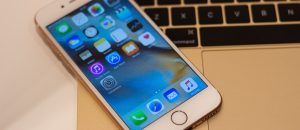…With the exception of Macs. I need to clarify this point before I get flamed. With the exception of Macs, Apple does not sell overpriced products. What exactly am I trying to say? I am saying iPhone, iPad, and iPod Touch are not overpriced, when compared to the competition. Don’t believe me? Let’s look at the facts.
Note: The following rant is based on a comparison of prices in the United States. While the facts and trends stated in this article should generally hold true in other regions, prices may vary around the world.
Before We Begin
Before we delve into a comparison of iDevices with the competition, let me clarify I am not an iSheep in the least. I own no iDevices and likely never will. My smartphone journey started with Windows Mobile powered Samsung Omnia; next came the Android powered Samsung Galaxy S; now I’m currently using Samsung Nexus S. I own no tablets but my first tablet will more likely than not be a Windows 8 powered tab.
Now that I have cleared the air of any potential Apple bias, onto the facts.
iPhone vs Android
Unlocked 16GB iPhone 4S retails for $649 while 32GB and 64GB versions are $749 and $849, respectively. The iPhone 5 will likely be priced the same. 16GB iPhone 4S on two-year contract sell for $199 while 32GB and 64GB versions sell for $299 and $399, respectively. This, again, will likely will be true for the iPhone 5. (Note: Sprint recently dropped 16GB iPhone 4S price to $149 on two-year contract in anticipation of the iPhone 5. This is an exception to the rule and not being considered in this comparison.)
Samsung Galaxy S III, the undoubted biggest competitor to the iPhone, sells for $599 for the 16GB unlocked version and $199-$279 (depending on your carrier) for 16GB version on two-year contract. The 32GB Galaxy S III retails for $649 unlocked and $249-$329 (depending on your carrier) on two-year contract. There is no 64GB Galaxy S III available at the time of this writing.
As you can see, when buying a smartphone on two-year contract, the price difference between the iPhone 4S and Samsung Galaxy S III is a farce. 16GB versions of both devices are for $199 (not counting Sprint’s recent price drop because the iPhone 5 will likely be $199, too), unless you are on T-Mobile in which case you pay $279 for a 16GB Galaxy S III. There is no bloody difference between iPhone 4S’s $199 and Galaxy S III’s $199.
A price difference between the two devices does arise for anyone opting for 32GB versions, with the iPhone 4S costing $50 more unless you are on T-Mobile in which case you pay $80 more for the Galaxy S III. Similarly, if buying unlocked phones, the iPhone 4S is $50-$100 more expensive than the Galaxy S III, depending on 16GB or 32GB version. However, any extra costs associated with unlocked or 32GB iPhone 4S is completely negated by resale value.
Like it or not, iPhone has much higher resale value than Android devices. Fact is iPhone 4S resells much better than the Galaxy S III, regardless of how awesome of a device the S3 is. For example, it has been almost a year since the release of the iPhone 4S and it can be traded in for over $400, contingent on the condition of the traded in device. I guarantee you will never find an Android device that resells for 2/3 of its original retail value almost a year after the device has been released. If you don’t believe me, let’s look at another example. The 16GB Galaxy S II (white international version) can be traded in with Amazon for $210 while black version can be traded in for $79. iPhone 4 16GB black AT&T version can be traded in for $270. The iPhone 4 came out in 2010 while the Galaxy S II came out in 2011, yet the iPhone 4 — a device that is over two years old — can be traded in for more money (Note: iPhone 4 16GB was priced the same as iPhone 4S 32GB, so it had a higher up-front cost than the 16GB Galaxy S II.)
To sum up, when purchasing 16GB versions on two-contract, there is no price difference between the iPhone 4S and Galaxy S III. A price difference does arise when looking at 32GB versions or purchasing either device at retail price. However, when taking into consideration the much higher resale value of the iPhone, all price differences are nullified and in fact, in some cases, makes the iPhone cheaper than its competitors.
Now, some people might be thinking Ashraf only compared the iPhone to one Android device — what about the others? Yes, I did only compare the iPhone to the Galaxy S III for two main reasons. Firstly, there are way too many Android phones out there for me to compare the iPhone to every single one. More importantly, however, the general trends discussed in iPhone vs Galaxy S III pricing holds true for the majority of other high-end Android devices. Yes, you will find price differences between iPhone and entry-level or mid-range Android devices, and there will be some high-end Android devices that are priced lower than the iPhone. Generally speaking, however, what I have stated above is accurate for iPhone vs high-end Android.
By the way, I’m sure people will argue that since the iPhone 4S has no expansion slot and Galaxy S III’s internal memory can be expanded by up to 64GB with microSD, the Galaxy S III is a better bang of the buck. However, the comparison of expandable memory is a feature difference and I’m not discussing feature differences in this article — only price differences. If I were to discuss feature differences, that would open up a whole new discussion because then other things could be argued such as iPhone has XXX so it is better value, Galaxy S III has XXX so it is better value, etc. It is a whole different can of worms.
iPad vs Android
The story with tablet pricing is a bit different than phones because there is more competition in the tablet market (i.e. more companies creating tablets) than the phone market, and this extra competition is driving down prices. However, as you will see, still there are Android tablets priced the same as the iPad and iPad’s high resale value pretty much knocks out any extra upfront costs you may have to pay for it.
16GB WiFi new iPad retails for $499. 32GB WiFi new iPad retails for $599. 64GB WiFi new iPad retails for $699. Tack on an extra $120 if you want WiFi + LTE connectivity to each of those prices.
The price of high-end Android tablets vary between $399-$499 depending on make and model. For example, Motorola XOOM 2 32GB WiFi’s price has been dropped from $499 to $449; 16GB WiFi Samsung Galaxy Tab 10.1 2 is being sold for $399; 16GB WiFi Samsung Galaxy Note 10.1 is selling $499; etc. Every now and then you may find a manufacturer undercutting the competitors by another $100, such as how last year the ASUS Transformer 16GB WiFi (10 incher) was being sold for $299. For the sake of comparison, let’s say high-end 10 inch Android tablets – 16GB WiFi versions – cost $399.
At $399 high-end Android tablets actually cost the same as the iPad 2, which is still being sold by Apple and is available for $399 (16GB WiFi version). To be completely fair, comparing high-end Android tablets to the iPad 2 is still applicable because, like it or not, the iPad 2 actually has specifications that still rival the high-end Android tablets of today. However, let’s ignore the iPad 2 for a second and compare Android tablets to the new iPad.
At $399 high-end Android tablets are $100 cheaper than the new iPad, yes? No, not if you consider resale value. For example, Amazon is accepting trade-ins of 16GB WiFi black iPad 2 (last year’s model) for up to $335. Come next year, the new iPad will likely be as highly valued. 32GB WiFi Motorola XOOM (last year’s model) is being traded-in for $180. The kicker? 32GB WiFi Motorola XOOM actually cost $100 more than 16GB WiFi iPad 2 until June 2011 when Motorola dropped the price to $499, yet iPad 2 still has higher resale value. If you compare resale value of other Android tablets, you will find similar trends.
To sum up, depending on which high-end Android tablet you buy, upfront costs may or may not be lower than the iPad. When factoring in resale value, however, the iPad turns out to be cheaper than its Android brethren.
P.S. Yes, I know 7 inch Android tablets are significantly cheaper than the iPad. However, 7 inch tablets and 10 inch tablets are two different beasts and shouldn’t be compared when it comes to price. When Apple releases their own 7 inch iPad Mini, then we shall compare.
iPod Touch vs Android
With the rise of smartphones, there are less and less iPod Touch competitors simply because MP3 players are being replaced by smartphones. In fact the only Android MP3 player I know that compares to the iPod Touch is Samsung Galaxy Player.
8GB iPod Touch (fourth generation) retails for $199 while the 32GB/64GB versions cost $299 and $399, respectively. Comparatively, 8GB Samsung Galaxy Player 5.0 retails for $199; there doesn’t appear to be 16GB/32GB/64GB versions of the Galaxy Player. What is the difference between 8GB iPod Touch’s $199 and Samsung Galaxy Player’s $199? Nothing! In fact if you compare resale values (Amazon is accepting 8GB iPod Touch fourth generation trade-ins for $115 while Galaxy Player 5.0 can be traded in for $78.75), 8GB iPod Touch is actually cheaper.
Okay, it should be mentioned Samsung Galaxy Player has a microSD slot and its storage can be expanded by up to 32GB. So, technically speaking, you could purchase 8GB Galaxy Player 5.0 for $199 then expand its memory by up to 32GB whereas you would need to shell out $100-$200 more for iPod Touches for more storage. However, as I mentioned in the iPhone vs Android section above, the difference between having expandable memory and not having expandable memory is a feature difference and, if we were to go there, we would have to do a full comparison, during which I’m sure there would be many pros and cons in both corners. For the purpose of price comparisons, we are not discussing features differences.
Conclusion
I’m no Apple fan, but I am getting sick and tired of people complaining about how Apple products are overpriced. Do Macs cost significantly more than comparable Windows PCs? Yes, they do. Do iDevices cost significantly more than comparable Android devices? No! So stop whining people. Sheesh.
[Image via Jason Balonski]

 Email article
Email article




